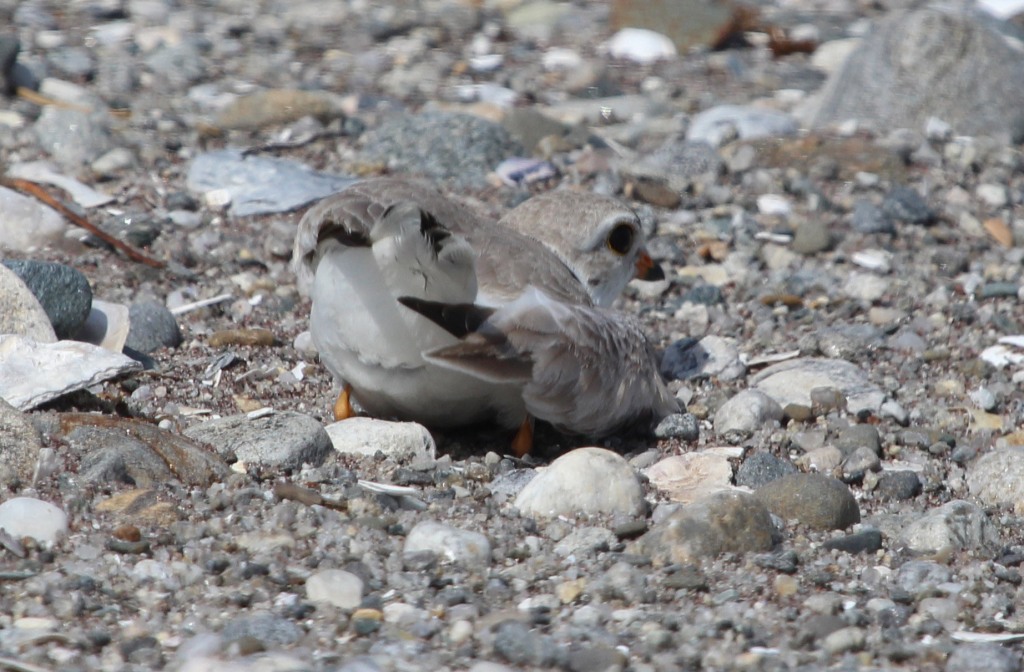
Young birds are extremely vulnerable to predation and an abundance of other hazards. Thankfully, nature evens the playing field to a degree by giving some parents clever defense mechanisms to protect their young.
Among the most interesting of these tricks are performed by waterfowl.
While walking in the woods the other day, I heard a frantic splashing in a nearby beaver pond. Upon further inspection, I saw a female mallard flopping around and generally causing a racket.
The duck appeared to be injured as it held out a wing as if it were broken. It looked as if the duck was trying to fly out of the water, but just couldn’t.
The mallard was perfectly healthy. It felt threatened by something and went into defense mode. I don’t know if it was me on the trail that threatened it or something else lurking along the pond’s edge. The chicks remained hidden in the vegetation while the adult flew to an open space and caused the scene.
Predators of the animal kingdom like easy targets and adult ducks often feign an injury to draw attention to itself. Should a predator get suckered into stalking the “helpless” prey, the duck will simply fly away and leave the predator with nothing.
While canoeing in northern New Hampshire one summer afternoon, an adult wood duck took this technique one step further. As I approached, completely oblivious that the wood duck was even close, it flew out of the brush and flopped into the water in front of the canoe. It took off ever so briefly and crashed into the water again about 10 feet away. It repeated this several times before disappearing into the brush.
Some shorebirds, such as killdeer and piping plovers, employ a similar broken-wing technique to lure predators away from nests and young.
Unfortunately, all the tricks in the world can’t provide protection from certain predators and sometimes young waterfowl fall victim to natural circumstances.
Imagine being a duckling happily following your mother and siblings along the edge of a pond. Life is new and exciting and there’s nary a care in the world. Suddenly, without a hint of a warning, you’re plucked underwater. Next thing you know, you’re dinner for a snapping turtle. This happens quite frequently and is a major cause of waterfowl chick mortality, especially among wood ducks.
On the other hand, if you’re the snapping turtle, you’re pretty happy. You can’t argue about a meal that comes along that easily; just look for little feet wiggling.
Perhaps the most disturbing cause of mortality among waterfowl chicks is being hit by a motorboat. This happens most frequently with loons and other diving birds that raise young on large bodies of water.
Adult loons are awesome divers and can reach depths of 100 feet or more in a matter of seconds. Baby loons, obviously, have not acquired that skill yet and stand no chance against a speeding motorboat.
Chicks often ride on the backs of a parent and sometimes they can hang on as the adult plunges downward. Pied-billed grebe chicks are particularly adept at this.
I thought of this scenario a few weeks ago when I watched a female common merganser lead four chicks across the Allegheny Reservoir in Pennsylvania. It was about 6:30 a.m., so it was well before the time powerboats crowd the water, but the chicks appeared so vulnerable in the middle of the water.
I remembered seeing a common merganser family that included about 20 chicks in Pittsburg, N.H., several summers ago and wondered if motorboats were the reason this particular female had only four chicks in tow.
Common mergansers have an interesting method of escaping dangerous situations. When the mother feels something is getting too close for comfort, she perks up and runs across the water. The babies follow suit, splashing all the way.
It actually looks quite comical. But, hey, if it works, it works.
